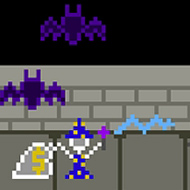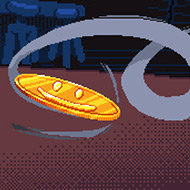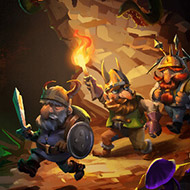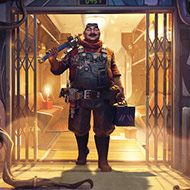Wizard School Dropout tells the story of a young apprentice who leaves magical education behind to pursue reckless experimentation with spells. Instead of studying structure and theory, players improvise, mix, and manipulate unstable enchantments in unpredictable ways. The experience blends chaotic discovery, timing, and strategy as players juggle creation and consequence. Every attempt is an experiment that may succeed brilliantly or fail spectacularly, transforming spellcraft into an interactive form of creative problem-solving and risk-taking.
Gameplay and Core Systems
The structure of Wizard School Dropout combines sandbox freedom with real-time reaction. Players brew and cast spells by combining elements in various ratios, unlocking strange behaviors and chain effects. It’s less about strict rules and more about curiosity—figuring out how far chaos can stretch before control breaks down.
- Alchemy-based casting: Mix ingredients to generate unstable magical reactions.
- Risk and reward: Every combination can create progress or an unexpected setback.
- Adaptive skill growth: Players learn by repetition, developing instinctive precision over time.
Every scenario presents evolving obstacles that respond to player behavior. Quick thinking, spatial planning, and experimentation remain key as the environment reacts dynamically to each spell’s outcome.
Discovery and World Design
The world of Wizard School Dropout unfolds through interconnected areas filled with relics, runes, and unpredictable energy fields. Unlike linear levels, these zones reward interaction and trial rather than combat alone. Exploration becomes an act of study as players analyze the consequences of magical chemistry.
- Hidden formulas: Discover unusual spell recipes that alter environmental physics.
- Interactive puzzles: Use elemental reactions to manipulate the surroundings.
- Resource improvisation: Combine fragments of found materials to enhance casting stability.
This approach promotes creativity over repetition. Players who embrace experimentation uncover both efficiency and humor, turning every attempt into an opportunity for discovery rather than punishment for failure.
Progression and Replay Value
Wizard School Dropout maintains interest through flexible systems that evolve with player decisions. Rather than fixed difficulty spikes, the game reacts to playstyle, introducing new challenges and spells as mastery develops. Experimentation becomes a path toward genuine progression.
- Scaling mechanics: Enemies and reactions adjust to reflect growing competence.
- Unlockable archives: Notes and journals reveal deeper context about abandoned magical institutions.
- Synergistic learning: Successful combinations influence the potency of later spells.
Because of this design, every return to the game feels distinct. Some sessions focus on combat improvisation, while others highlight environmental puzzle-solving or spell efficiency. The absence of a single correct route ensures continual replay value.
Conclusion
Wizard School Dropout turns magical study into creative chaos. Through experimentation, adaptation, and humor, it rewards players who learn from mistakes and use unpredictability to their advantage. The fluid design encourages curiosity rather than strict mastery, making each discovery satisfying in its own right. By turning the unpredictable into a form of strategy, the game delivers a rare experience that values invention over order, perfectly capturing the spirit of a dropout wizard who learns not through structure, but through boundless trial and error.

















































































